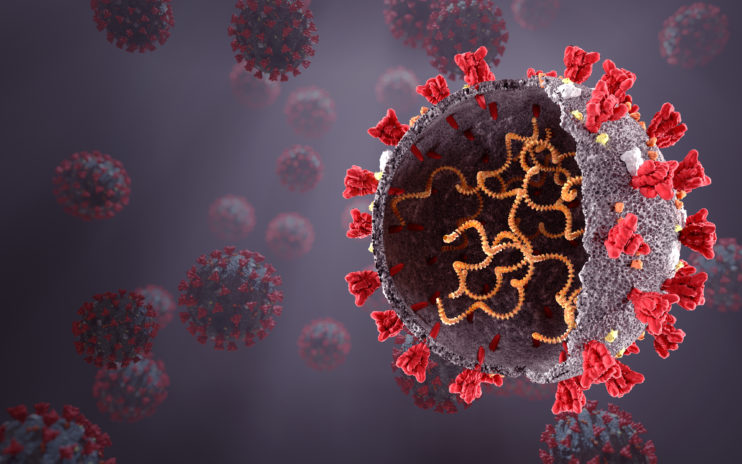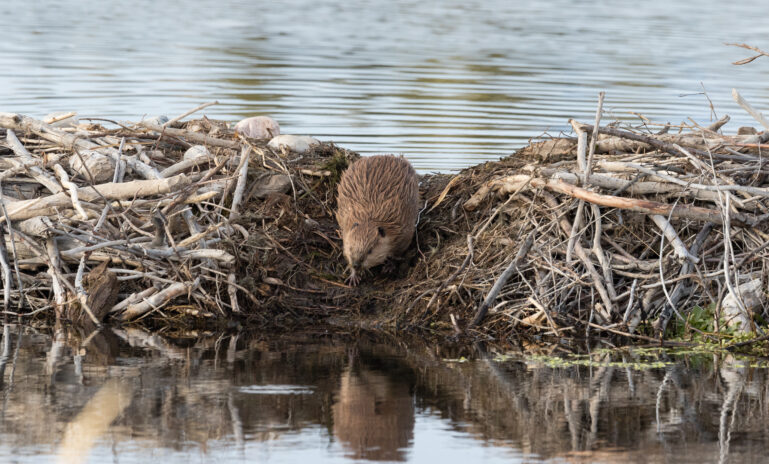Sexual Reproduction Challenges Evolution, Affirms Creation
reproduction have emerged by random, natural processes from early life-forms practicing asexual reproduction? How
could natural selection evolve two versions of a species: essentially identical except for reproductive organs?
When the data is analyzed, a creation perspective may make more sense.
Accounting for the Emergence of Sexual Reproduction
A review of the scientific literature reveals that the evolution of sexual reproduction has been described as
“controversial,”1 and as a “paradox”2 and a “mystery.”3 A 2002 article in Nature
Reviews Genetics states that “at least 20 theories had been proposed to explain the widespread occurrence of
sexual reproduction”4; and a 2017 article in Trends in Ecology and Evolution observes that
“many of the plausible hypotheses for sex have restrictive assumptions.”5 Moreover, there is no hard
evidence for any of the twenty or so hypotheses.6
Yet the most perplexing question from an evolutionary perspective is: why did advanced life-forms evolve
sexuality at all? Why didn’t we evolve based on asexual reproduction? To use a mythological image: why aren’t we
all Amazon women?
It should be noted that asexual reproduction can be much more complex than simple cell division (mitosis).
An advantage of sexual reproduction via meiosis
is the exchange of genetic material; however, this can also be done asexually. For example, the phenomenon of parasexuality describes
the direct transfer of genetic material among bacteria7; and, as first reported in 1953,8
it is common in fungi.9 Even some higher life-forms reproduce asexually via apomixis,
which is reproduction by special generative tissues without fertilization; that is, without female and male
union. The term apomixis includes parthenogenesis
(in which a new individual develops from an unfertilized egg) in some plants, invertebrates, and even
vertebrates.
The cell biology of some of these asexual reproductive mechanisms is similar to sexual reproduction in the
transfer of genetic material; it’s just that distinct “male” and “female” forms are lacking. Since the theory of
evolution often focuses on finding transitional forms, these asexual reproductive mechanisms might be
viewed in that way.
However, the scientific literature suggests that these asexual processes could be a barrier to the
development of sexuality, rather than a transition into it. Articles in the Journal of Heredity and
Integrative Zoology, respectively, emphasize that sexual reproduction offers no advantage in the context
of natural selection, and that it is less efficient than asexual reproduction:
Nobody has attributed any benefit of amphimixis
[sexual reproduction] to the parents who are engaged in it, and the supposed beneficiaries are the offspring.10
[The] inherent costs [of sex] have made its maintenance difficult to explain. The most famous of these is the
twofold cost of males, which can greatly reduce the fecundity [reproductive capacity] of a sexual population,
compared to a population of asexual females.11
A 2018 article article in Trends in Genetics summarizes the problems:
The issue of the evolution of amphimixis involves three problems: (i) how it originated some 2 billion years ago;
(ii) how it manages to outcompete obligate apomictic clones that keep emerging in some, although not all,
amphimictic species; and (iii) how its gradual evolution does not turn amphimixis into apomixis or something
similar. . . . Problem (iii) is the toughest one. Amphimixis can disappear not only abruptly, . . . but also
gradually.12
These and other journal articles taken together reveal an interesting picture:
- There is no consensus among evolutionary biologists about the development of sexual reproduction, and many of
the hypotheses are structured as restrictive “just so stories” requiring a cascade of unlikely events. - Most—if not all—life-forms could be configured for asexual reproduction.
- Sexual reproduction is more “expensive” than asexual reproduction; it is more difficult and requires more
energy. - From the point of view of natural selection, there is no benefit to sexual reproduction. To the contrary,
asexual reproduction offers reproductive advantage over sexual reproduction. - The real question may be how do we keep sexual reproduction—however we acquired it. Why do we and
other sexual life-forms not devolve into the less “expensive” condition of asexuality?
Which Model Makes More Sense?
In light of all the above, the evolution of sexual reproduction by random, spontaneous processes makes no
sense. Assuming natural selection as the mechanism, evolution should have stopped with some form of asexual
apomixis. Even if a life-form had happened to evolve sexual reproduction, it would have disappeared because
there was no reproductive advantage.
There must be a different answer . . . and that answer may be found in
the Bible:
God created man in His own image, in the image of God He created him; male and female He created them (Genesis
1:27 NASB).
The LORD God said, “It is not good for the man to be alone; I will make him a helper suitable for him” (Genesis
2:18 NASB).
Sexual reproduction is not for efficiency; it offers no reproductive advantage. Why does it exist? It may be
for companionship and partnership, as ordained by the creator-God for humans—and for many animals as well. It
seems most plausible that it came from a loving God—not as the product of an evolutionary processes.
Acknowlegment:
This topic was the idea of my 17-year-old grandson, Jeff Obermeyer, Jr., who
deserves special credit for his insight.
To find out more about Hugh Henry, please check out his biography.
Endnotes
- Matthew Hartfield and Peter D. Keightley, “Current Hypotheses for the Evolution of Sex and Recombination,”
Integrative Zoology 7 (June 12, 2012): 192–209, doi:10.1111/j.1749-4877.2012.00284.x. - Roger Butlin, “Evolution of Sex: The Costs and Benefits of Sex; New Insights from Old Asexual Lineages,” Nature
Reviews Genetics 3 (April 1, 2002), 311–17, doi:10.1038/nrg749. - Maurine Neiman, Curtis M. Lively, and Stephanie Meirmans, “Why Sex? A Pluralist Approach Revisited,” Trends in
Ecology and Evolution 32 (June 9, 2017): 589–600, doi:10.1016/j.tree.2017.05.004. - Roger Butlin, “Evolution of Sex,” 192–209
- Maurine Neiman, Curtis M. Lively, and Stephanie Meirmans, “Why Sex?” 589–600.
- Alexey S. Kondrashov, “Through Sex, Nature Is Telling Us Something Important,” Trends in Genetics 34, no. 5
(February 4, 2018): 352–61, doi:10.1016/j.tig.2018.01.003. - Sarah P. Otto, “Sexual Reproduction and the Evolution of Sex,” Nature Education 1 (2008): 182, accessed August 23,
2018, https://www.nature.com/scitable/topicpage/sexual-reproduction-and-the-evolution-of-sex-824. - G. Pontecorvo et al., “The Genetics of Aspergillus nidulans,” Advances in Genetics 5 (1953): 141–238,
doi:10.1016/S0065-2660(08)60408-3. - R. D. Tinline and B. H. MacNeill, “Parasexuality in Plant Pathogenic Fungi,” Annual Review of Phytopathology 7
(September 1969): 147–68, doi:10.1146/annurev.py.07.090169.001051. - A. S. Kondrashov, “Classification of Hypotheses on the Advantage of Amphimixis,” Journal of Heredity 84 (September
1, 1993): 372–87, doi:10.1093/oxfordjournals.jhered.a111358. - Matthew Hartfield and Peter D. Keightley, “Current Hypotheses for the Evolution of Sex,” 192–209.
- Alexey S. Kondrashov, “Through Sex,” 352–61.






